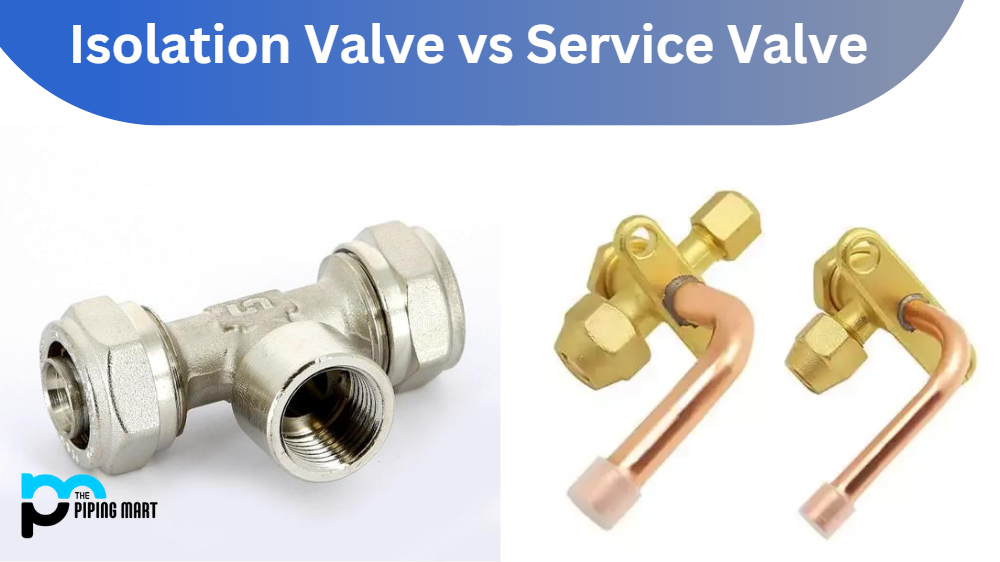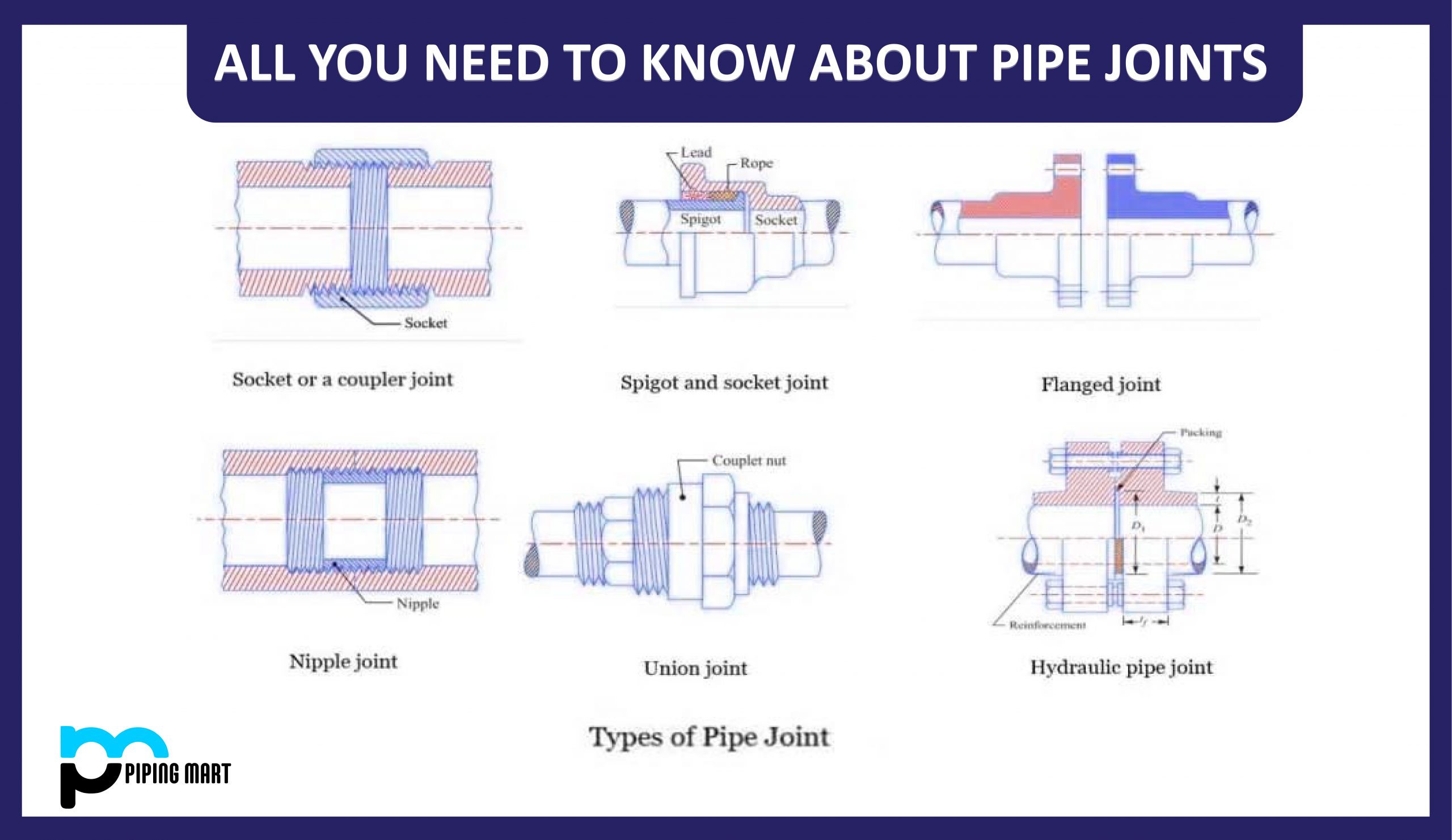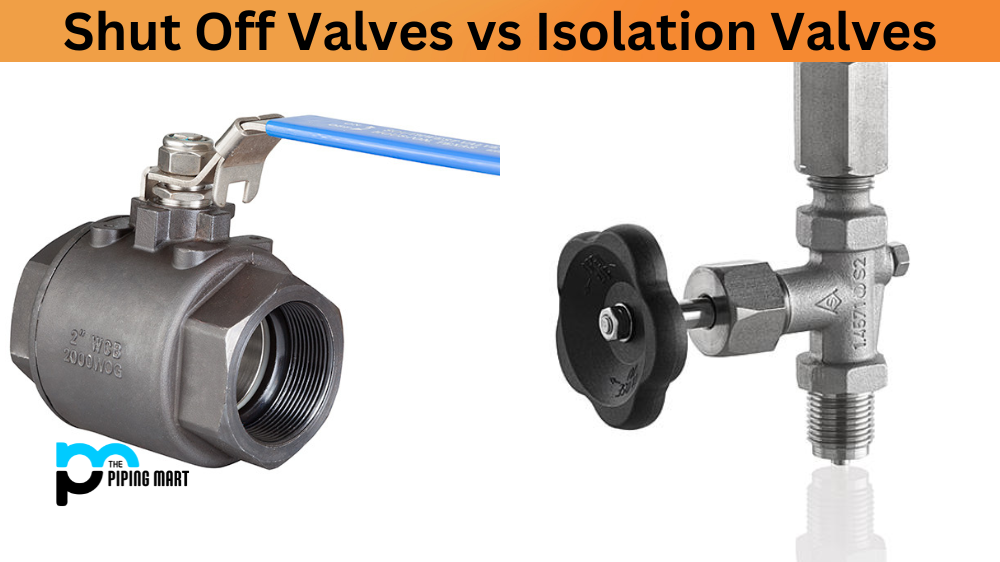A plumbing system’s vital function is to control water flow through pipes. In any plumbing system, there are two valves: isolation and service. While both these valves serve the same purpose, they are designed to perform different functions under varying conditions. As a homeowner, it’s essential to grasp the difference between the two valves to perform necessary maintenance and repairs as required. This blog post will help you understand the difference between isolation and service valves and highlight their importance in your home.
What is Isolation Valve?
An isolation valve is designed to isolate one section of your plumbing system, preventing water from flowing through the rest of the system. It is mainly used in emergencies when a plumbing issue needs to be dealt with but without disrupting the water supply to the rest of your home. When you shut off the isolation valve, the water supply will be stopped to the isolated portion, allowing repair works to be carried out without affecting the water supply elsewhere. Typically, isolation valves are used when the plumbing problem is limited to a specific area, such as a bathroom or kitchen sink.
What is Service Valve?
A service valve, on the other hand, is an essential component of any plumbing system. It is installed strategically to allow easy access to the water supply during repair works or maintenance. Unlike the isolation valve, the service valve controls the entire water supply to your home. Therefore, it’s critical to ensure it’s well-maintained, works properly, and is easily accessible in an emergency.
Difference Between Isolation Valve and Service Valve
Types
It’s worth noting that isolation and service valves are available in different types. The most common isolation valve types include the ball valve, gate valve, and globe valve, while the service valve comprises three types: the gate valve, Globe valve, and the ball valve. Of these valves, ball valves are considered more durable, primarily because they have fewer moving parts that can wear out over time. It is generally recommended to use ball valves for both service and isolation needs.
Installation
It is essential to have these valves installed and functioning correctly in your home. If there is any issue with the plumbing system, shutting off the isolation valve can prevent further damage to your home. Similarly, a faulty service valve can result in leaks and water damage to your property.
How Do Isolation Valves Work?
Isolation valves work by completely stopping the flow of fluid through the valve. This is accomplished by sealing off the opening through which fluid flows with a solid plug or disc. When an isolation valve is closed, no fluid can pass through it.
How Do Service Valves Work?
Service valves allow fluid to flow through the valve at a reduced rate. This is accomplished by partially opening the opening through which fluid flows. This allows fluid to pass through the valve at a reduced rate, which makes it easier to perform maintenance or repair tasks on the isolated section of piping.
Advantages of Isolation Valves
One advantage of isolation valves is that they can be used as a safety measure to prevent the spread of contaminants. Additionally, isolation valves can isolate piping sections for maintenance or repair purposes without shutting down the entire system.
Advantages of Service Valves
One advantage of service valves is that they provide easy access to piping sections for maintenance or repair. Additionally, service valves can be used as isolation valves if necessary.
Disadvantages of Isolation Valves
One disadvantage of isolation valves is that they can cause disruptions in service if not properly maintained. Additionally, isolation valves can be expensive and require special training to install and operate correctly.
Disadvantages of Service Valves
One disadvantage of service valves is that they may need a complete seal, which could allow contaminants to enter the system. Additionally, service valves may not be able to completely stop the flow of fluid, which could cause problems if repairs need to be performed on the isolated section.
Conclusion
In summary, isolation and service valves might look and function similarly, but they are designed for different purposes. An isolation valve is used in plumbing emergencies, where only a specific area requires repair or maintenance. On the other hand, a service valve controls the entire water supply to your home and should be well-maintained to avoid unexpected leaks. As a homeowner, you should know where these valves are located, be familiar with the beneficial types, and keep them in good working order to ensure your plumbing system runs smoothly. If you’re ever in doubt, it’s always a good idea to call a professional plumber who can guide you on properly using and maintaining these valves.

A passionate metal industry expert and blogger. With over 5 years of experience in the field, Palak brings a wealth of knowledge and insight to her writing. Whether discussing the latest trends in the metal industry or sharing tips, she is dedicated to helping others succeed in the metal industry.




